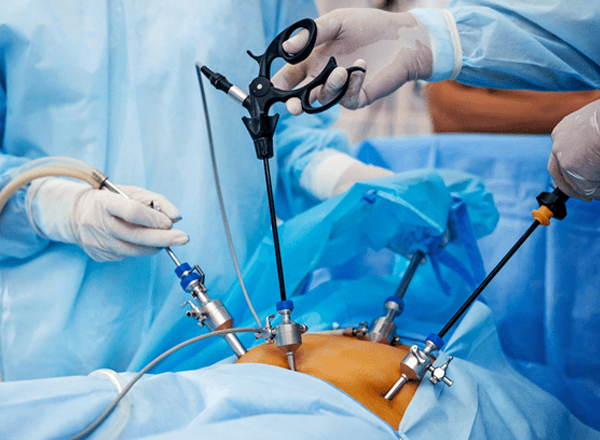
Laparoscopic surgery, also known as minimally invasive or keyhole surgery, involves using small incisions and specialized instruments to perform various surgical procedures. This approach offers several advantages, including shorter recovery times, reduced pain, and smaller scars compared to traditional open surgeries. Two common laparoscopic procedures related to gynecology are hysterectomy and myomectomy:
-
Laparoscopic Hysterectomy:
-
Purpose: A hysterectomy involves the removal of the uterus. This procedure may be recommended for various medical conditions, such as uterine fibroids, endometriosis, pelvic organ prolapse, or certain cancers.
-
Laparoscopic Approach: In a laparoscopic hysterectomy, the surgeon makes small incisions in the abdomen through which a laparoscope (a thin, lighted tube with a camera) and other surgical instruments are inserted. The surgeon then removes the uterus through these small incisions.
-
Types: There are different types of laparoscopic hysterectomy, including total laparoscopic hysterectomy (removing the entire uterus), laparoscopic-assisted vaginal hysterectomy (removing the uterus through the vagina with laparoscopic assistance), and laparoscopic supracervical hysterectomy (removing the upper part of the uterus).
-
Recovery: Patients undergoing laparoscopic hysterectomy often experience a faster recovery, shorter hospital stay, and reduced postoperative pain compared to traditional open hysterectomy.
-
-
Laparoscopic Myomectomy:
-
Purpose: Myomectomy is a surgical procedure to remove uterine fibroids while preserving the uterus. It is often recommended for women who wish to retain their fertility or maintain their uterus for other reasons.
-
Laparoscopic Approach: In laparoscopic myomectomy, small incisions are made in the abdomen, and a laparoscope and other specialized instruments are used to locate and remove the fibroids. The uterus is then reconstructed.
-
Advantages: Laparoscopic myomectomy offers advantages such as less postoperative pain, quicker recovery, and smaller scars compared to traditional open myomectomy.
-
Fertility Preservation: For women desiring future pregnancies, laparoscopic myomectomy can be an option to address fibroids while preserving the uterus.
-
Follow-up: Recovery after laparoscopic myomectomy typically involves a shorter hospital stay and a quicker return to normal activities compared to open surgery. However, individual recovery experiences can vary.
-
Laparoscopic procedures, including hysterectomy and myomectomy, are performed by trained surgeons skilled in minimally invasive techniques. Not all patients are candidates for laparoscopic surgery, and the choice of approach depends on factors such as the patient's medical history, the complexity of the procedure, and the surgeon's expertise. Patients should discuss the available options and potential risks and benefits with their healthcare providers before deciding on a specific surgical approach.
